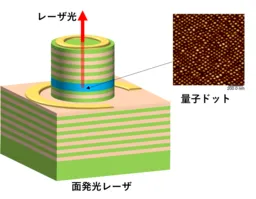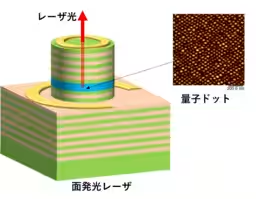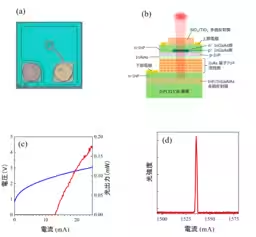

First Practical Surface-Emitting Laser for Optical Fiber Communication Developed
Introduction
In an astonishing breakthrough, the National Institute of Information and Communications Technology (NICT) and Sony Semiconductor Solutions Corporation have achieved the world's first practical surface-emitting laser suitable for optical fiber communication. This accomplishment marks a significant advancement in the quest for smaller, more energy-efficient, and cost-effective light sources for fiber optic communication systems.
Key Highlights
- - Successful development of a practical surface-emitting laser for optical fiber communication.
- - Utilization of quantum dots as emission materials coupled with NICT's precision crystal growth technology and Sony's advanced processing techniques.
- - A major step toward miniaturizing and lowering the cost of light sources for optical fiber communication systems.
Technical Innovations
This innovative laser leverages quantum dots, which are nanoscale semiconductor particles, as its emission material. The NICT's high-precision crystal growth technique has enabled effective utilization of these quantum dots to produce a laser operating at the 1550 nm wavelength, which is critical for current optical fiber communications. The successful implementation of this cutting-edge technology also promises significant advantages in terms of mass production, cost efficiency, and enhanced output.
Background and Rationale
As global data transmission demands continue to burgeon, the communication sector is increasingly focused on low-power and high-capacity data transmission solutions. Vertical-cavity surface-emitting lasers (VCSELs) have emerged as an attractive solution, yet traditional development efforts have typically operated within the near-infrared range of 850 nm to 940 nm. Creating a VCSEL that operates efficiently at the longer 1550 nm wavelength has posed substantial technical challenges, chiefly around material selection and structural design complexity.
Breakthrough Achieved
In collaboration with Sony, NICT has successfully developed a method to drive VCSELs that employ quantum dots for the 1550 nm band. This triumph addresses several challenges that have historically plagued VCSEL development, including the sophisticated material combinations required for crystal growth and efficiency improvements necessary for longer wavelengths.
1. Semiconductor Crystal Growth: NICT has pioneered a technique for high-precision compound semiconductor crystal growth via molecular beam epitaxy. For lasers targeting the 1550 nm band, producing high-reflectivity semiconductor layered membranes has traditionally been challenging due to limited material combinations.
- The newly developed method achieves over 99% reflectivity in the semiconductor layered membranes, allowing for precise control of material proportions during crystal growth.
- The implementation of a strain compensation technique has also been critical; it effectively neutralizes the internal strains in the quantum dots, allowing for increased emission density.
2. Device Design: Sony's contribution focuses on device structure and process technology. By utilizing tunnel junctions, the researchers successfully designed a mechanism for efficient current injection. This was necessary to mitigate the challenges of light extraction as the electrodes often obstruct the laser light output.
- This step facilitated vertical light emission from the quantum dots, enhancing output stability and efficiency.
With these joint innovations, the team managed to demonstrate lasing at 1550 nm with minimal current thresholds, providing a substantial improvement in stability and light emission quality.
Future Prospects
Moving forward, the established technology of quantum dot VCSELs will be leveraged to explore additional enhancements in optical fiber communication systems as we transition into the Beyond 5G era. Continued technical development and societal implementation efforts will be pursued rigorously.
This groundbreaking research was published in the esteemed journal Optics Express, further highlighting its significance in the field of optical technologies. The publication, titled "Electrically pumped laser oscillation of C-band InAs quantum dot vertical-cavity surface-emitting lasers on InP(311)B substrate," will appear in the upcoming March 24, 2025, issue.
Conclusion
As communication technology advances, the successful integration of this innovative VCSEL technology has the potential to reshape the landscape of optical communications, promising not only enhanced performance but also cost-effectiveness in high-speed data transmission. The collaboration between NICT and Sony exemplifies how advanced research and innovation can come together to create solutions that meet the growing demands of our data-driven society.



Topics Consumer Technology)










【About Using Articles】
You can freely use the title and article content by linking to the page where the article is posted.
※ Images cannot be used.
【About Links】
Links are free to use.